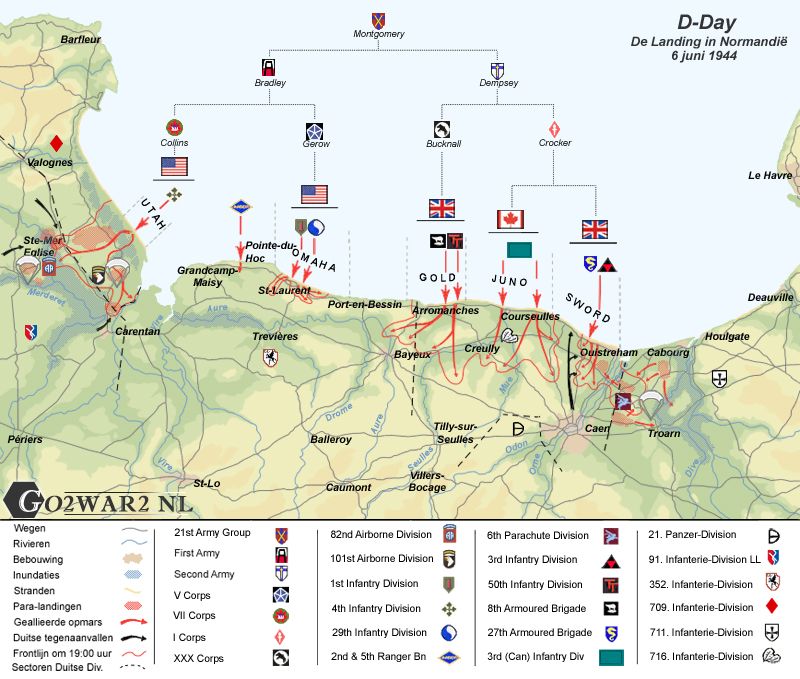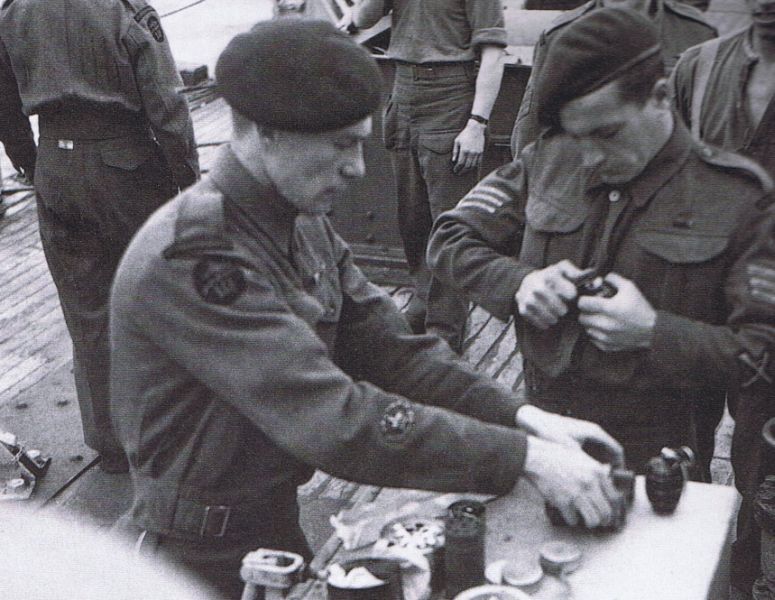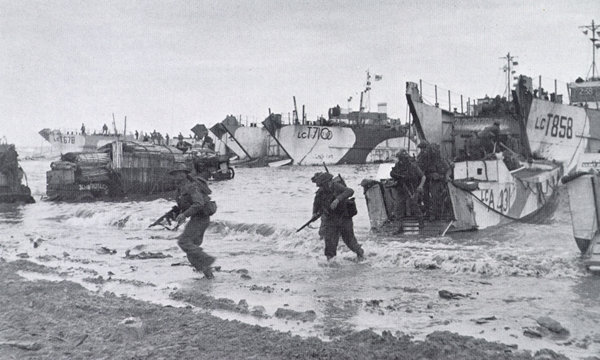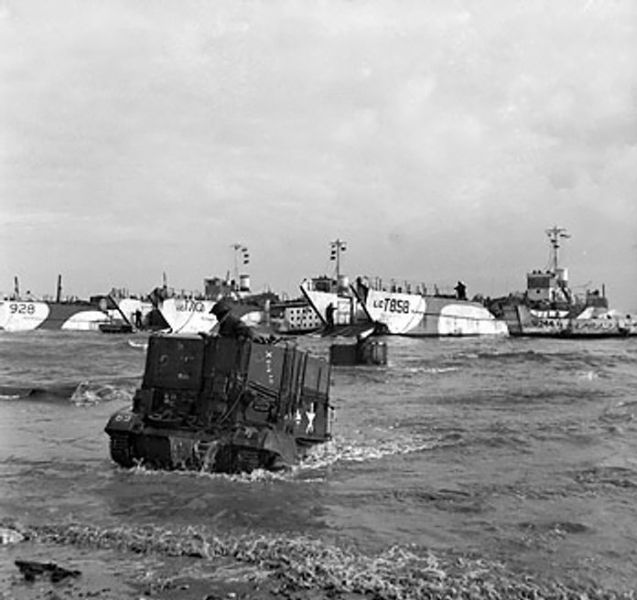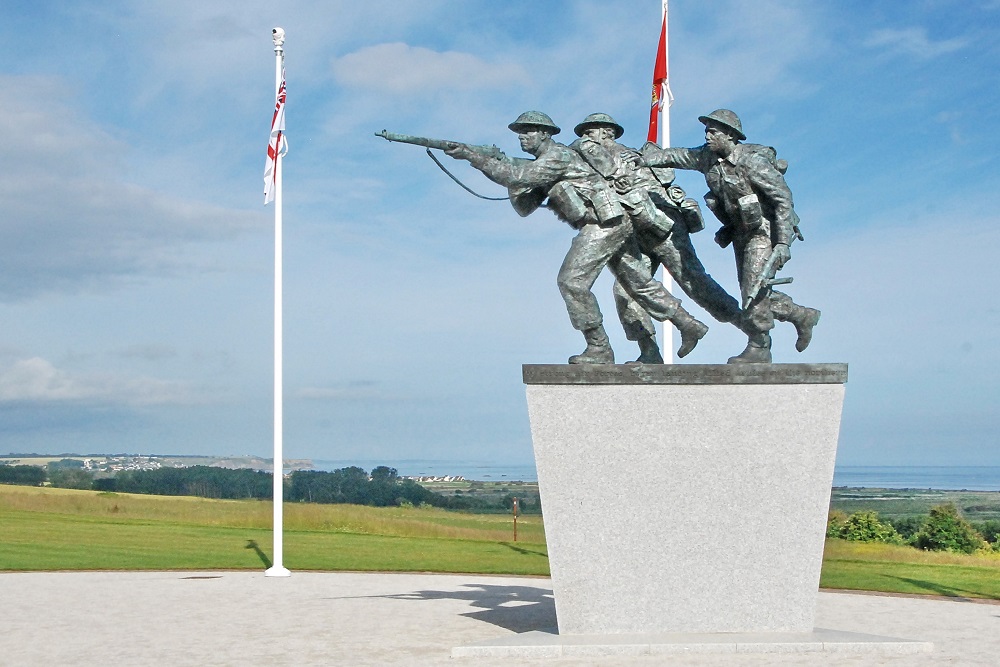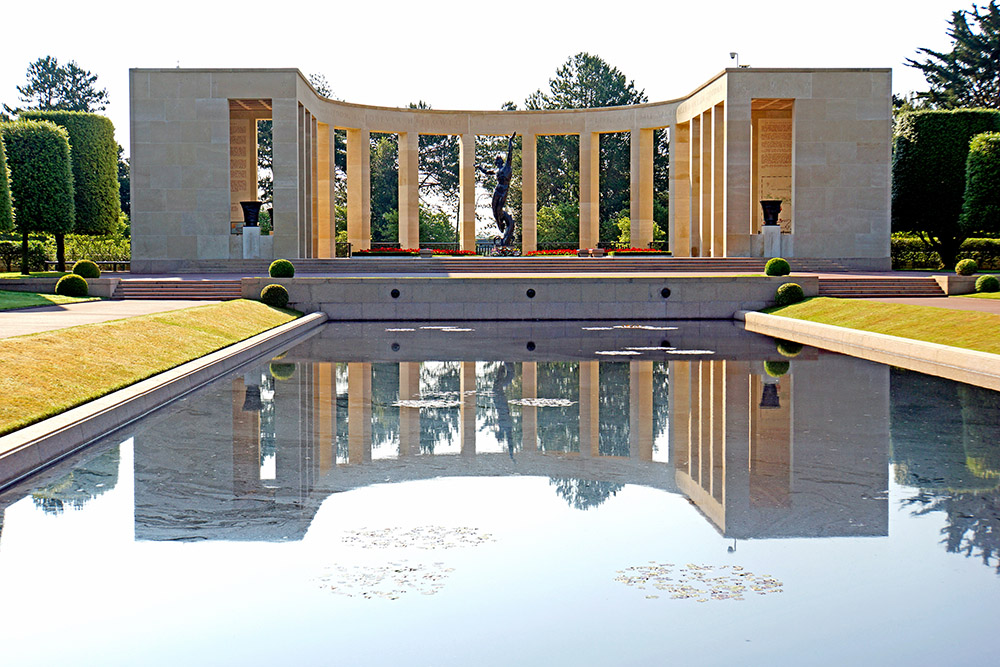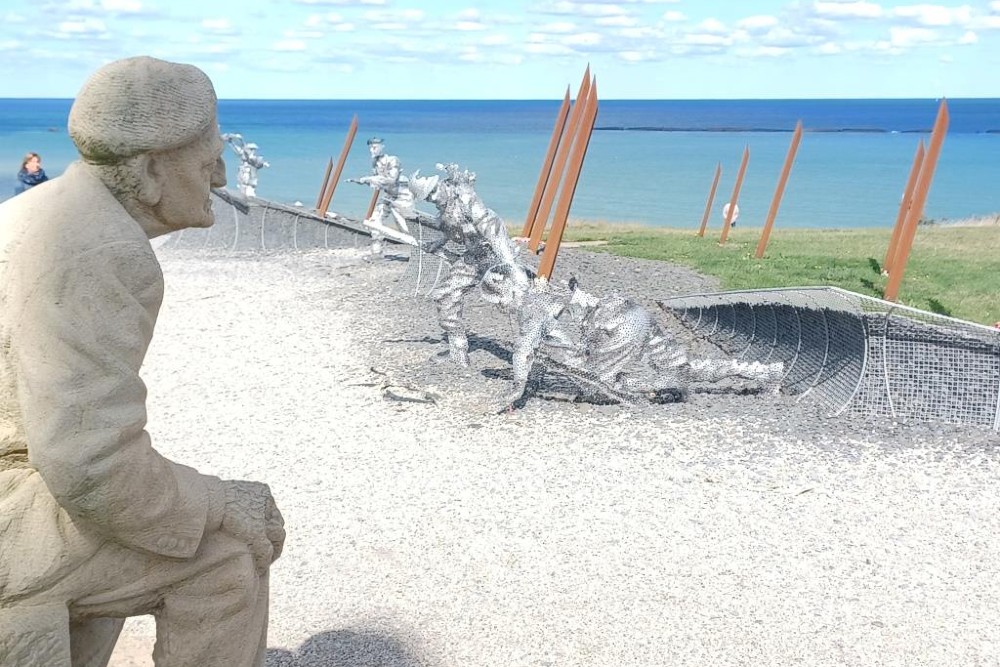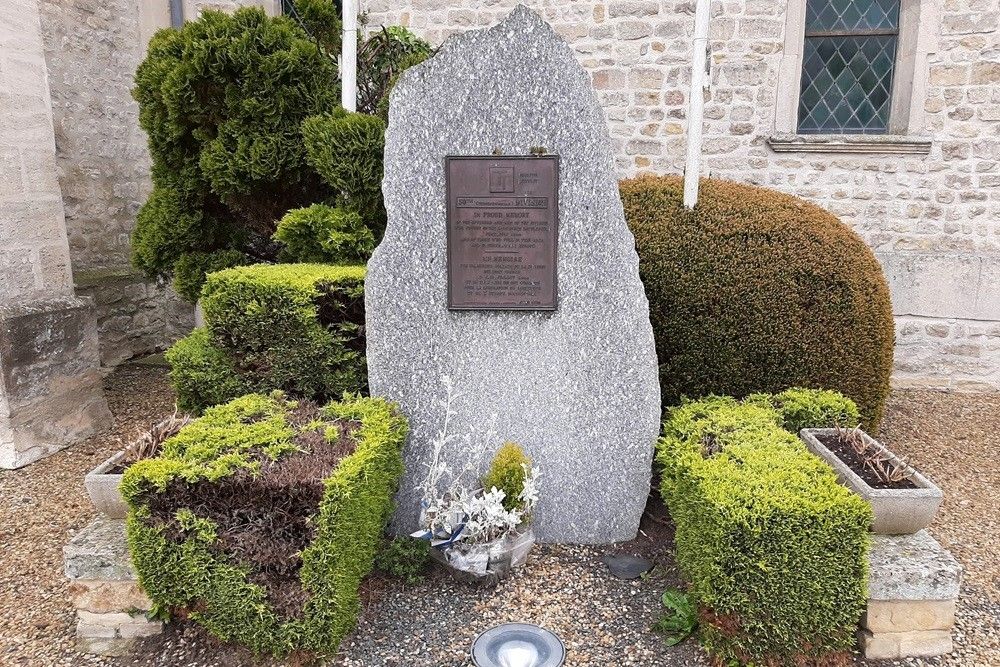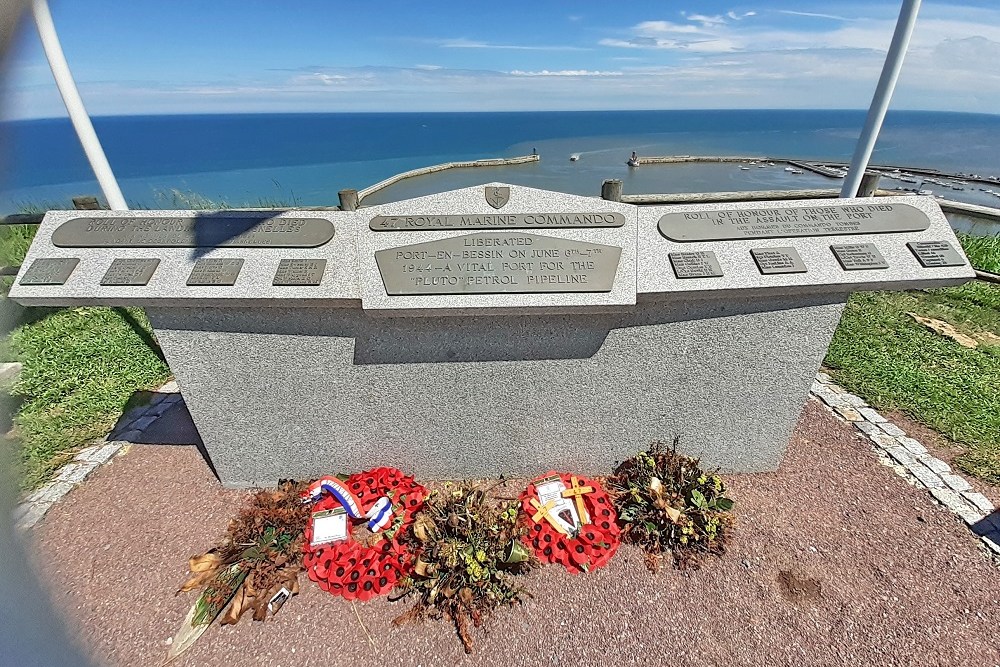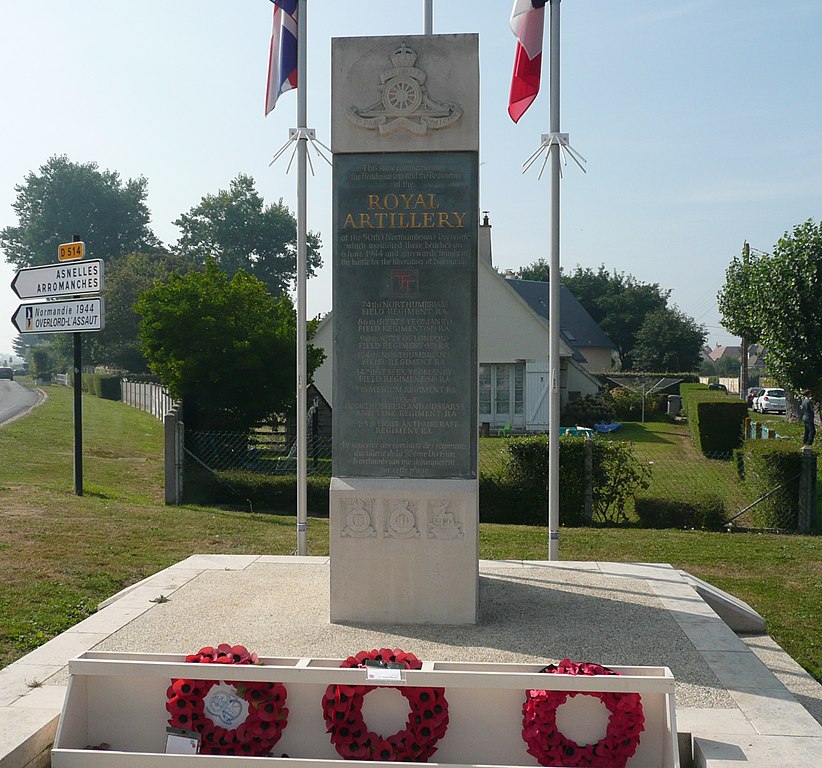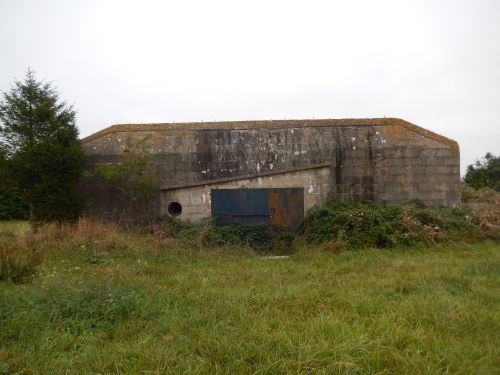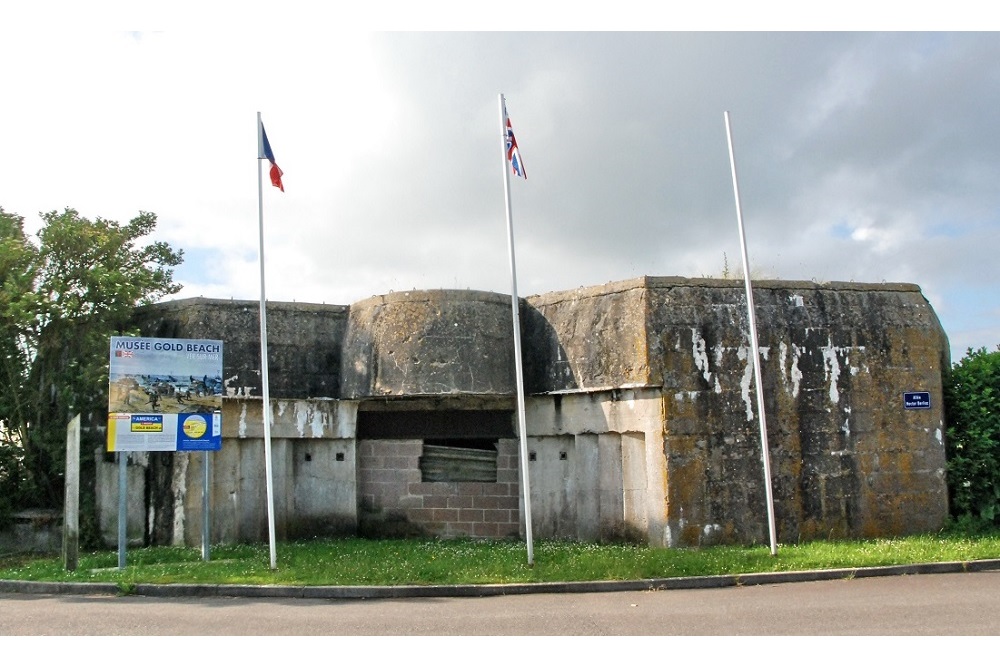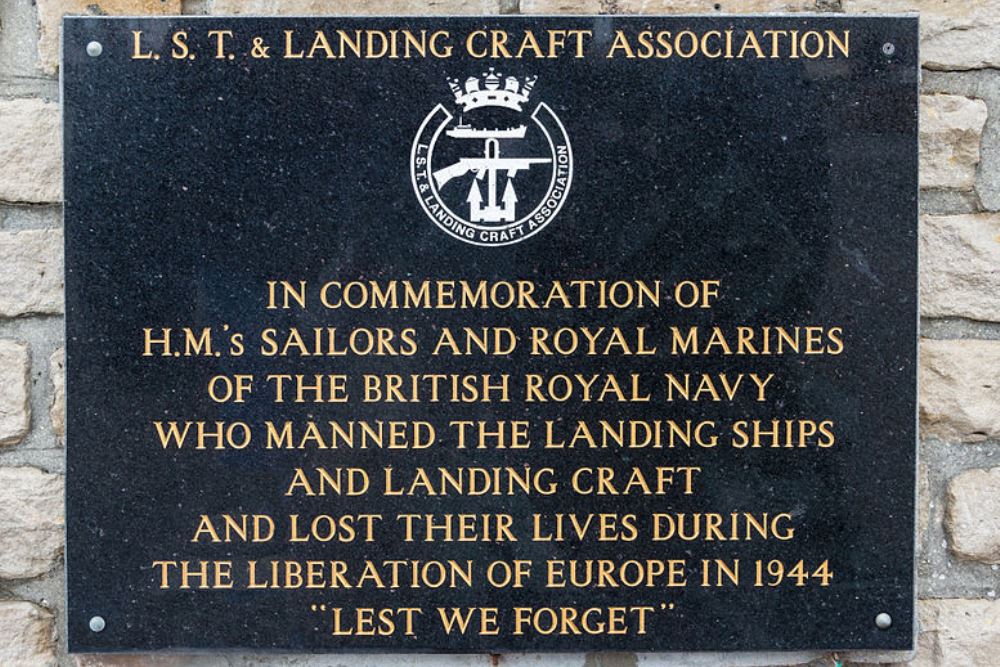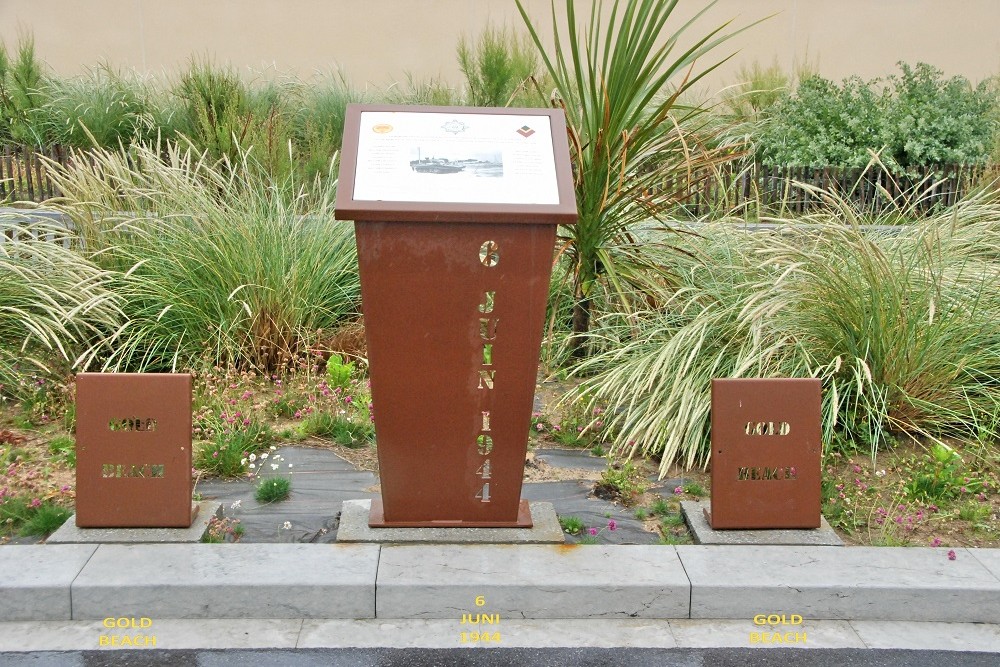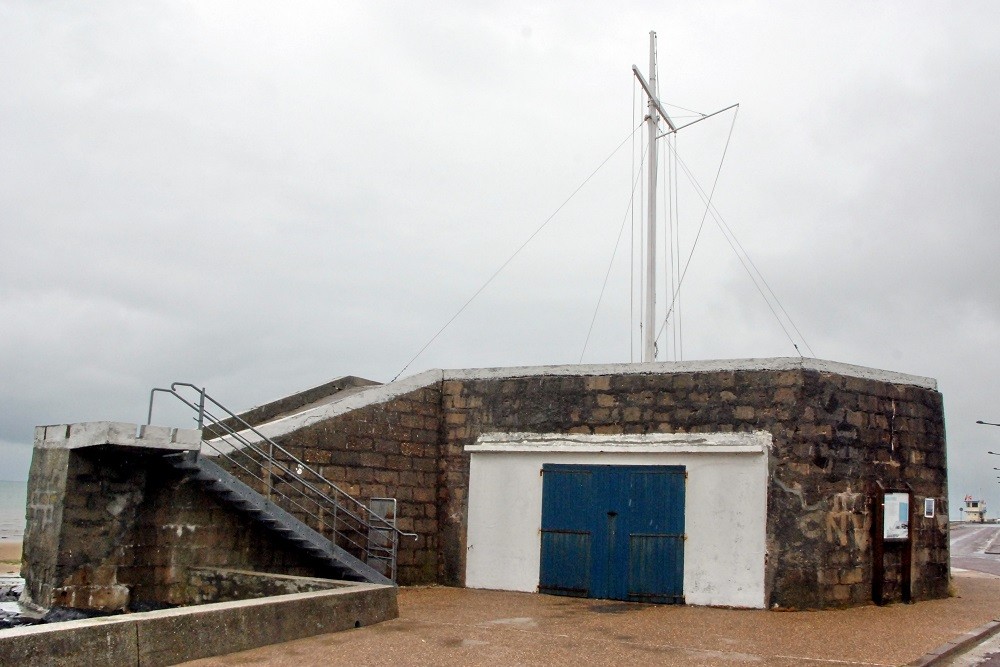Introduction
June 6, 1944 was a very important date for the liberation of Europe. On this day, the largest amphibious landing in the history of the European continent took place, Operation Overlord, when more than 130,000 British, American, and Canadian troops set foot on French soil in Normandy. Their task was to break through Hitler’s Atlantic wall. Operation Overlord claimed the lives of thousands of young men and the Third Reich never recovered. The tide definitively turned in favor of the allied forces.
Planning and defense
Gold Beach was in the center of the five invasion beaches and the most westerly of the British/Canadian beaches where the 2nd British Army began their invasion. The beach encompassed the coastline between the Cotentin peninsula and the Orne river. Because it was quite rocky and surrounded by steep cliffs, the German military command deemed it highly unlikely that the allies would attempt a landing there. Nevertheless, in 1943, a powerful coastal battery was constructed at the shoals at Longues between Gold and Omaha. The battery included a fire control bunker, seven shelters, six bunkers with Tobruks, a mortar pit and four six-inch cannons with a range of 12 miles, manned by 184 sailors from the Kriegsmarine. On May 28 and June 3, 1944, the battery was bombed by the allied air force, but the aerial attacks did no damage. Two additional batteries were located further inland near the village of Ver-sur-Mer which were manned by units from the 1260. and 1716. Artillerie-Regiment. A radar station on the western side of Gold Beach at St. Côme-de-Fresné was destroyed by allied bombings prior to D-Day, but the concrete base was still used as a stronghold.
The Germans did not expect an attack at this location, but the coast was still well defended. German defenses and obstructions were manned by two battalions from the 726. Regiment of the 716. Küstenverteidigungsdivision, most significantly three Widerstandsneste, equipped with heavy machine guns. The installations were ringed by bunkers, barbed wire and mine fields. The Germans converted vacation homes on the beach into defensive positions, and the coastal village of La Rivière was transformed into a fortress. More than 2,500 obstacles, including Czech hedgehogs and wooden posts, many topped with mines, were placed on the beach.
The British 50th "Northumbrian" Infantry Division, under the command of Major-General Douglas Graham, was assigned to storm the beach. The division was part of the British XXX Corps, which had also fought in France in 1940, as well as northern Africa. At its founding, the groups consisted of volunteers from the area near the Tyne and Tees rivers in northeast of England - hence the "TT" on their division patch – but by 1944, that was no longer the case.
The beach was divided into sectors Item, Jig, King and Love, which were subsequently divided into sectors Red and Green. Armored vehicles from the Westminster Dragoons and the 6th Assault Regiment Royal Engineers were meant to reach shore before the first wave of infantry in order to clear up obstacles on the beach. The 231st Brigade troops were set to land on the right side in sector Jig, and the 69th Brigade would land on the left side in sector King. Those units would then be followed by the 56th (on the right) and the 151st (on the left). DD tanks from the 8th Armored Brigade were to precede the infantry. Each brigade was accompanied by one regiment from either the Nottinghamshire Yeomanry or the Dragoon Guards.
The 50th Infantry Division’s mission was first to take the German coastal defense lines, then to force their way through to Route Nationale 13, the road to Bayeux-Caen, which was essential for transporting German reserves. By the end of the day, Bayeux was to be taken and contact was to be established between the Canadian 3rd Infantry Division on Juno Beach in the east and the American 1st and 29th Infantry Divisions on Omaha in the west. The 47th Royal Marine Commando was tasked with capturing the harbor of Port-en-Bessin.
Definitielijst
- Brigade
- Consisted mostly of two or more regiments. Could operate independently or as part of a division. Sometimes they were part of a corps instead of a division. In theory a brigade consisted of 5,000 to 7,000 men.
- D-Day
- The day of the long awaited invasion of western Europe in Normandy, France, 6 June 1944. After a long campaign of deception the allies attacked the coast of Normandy on five beaches to begin their march on Nazi Germany. Often explained as Decision Day, though this is entirely correct. The D stands for Day as generally used in military language. In this case it means an operation beginning on day D at hour H. Hence “Jour J“ in French.
- Infantry
- Foot soldiers of a given army.
- invasion
- Armed incursion.
- Kriegsmarine
- Germa navy. Part of the Wehrmacht next to Heer and Luftwaffe.
- mine
- An object filled with explosives, equipped with detonator which is activated by either remote control or by colliding with the targeted object. Mines are intended to destroy of damage vehicles, aircrafts or vessels, or to injure, kill or otherwise putting staff out of action. It is also possible to deny enemy access of a specific area by laying mines.
- mortar
- Canon that is able to fire its grenades, in a very curved trajectory at short range.
- radar
- English abbreviation meaning: Radio Detection And Ranging. System to detect the presence, distance, speed and direction of an object, such as ships and airplanes, using electromagnetic waves.
- Regiment
- Part of a division. A division divided into a number of regiments. In the army traditionally the name of the major organised unit of one type of weapon.
The landings
On the night of June 5 and in the early hours of June 6, the RAF and the USAAF bombed the coastal defenses and artillery batteries. An hour before the first landings were scheduled to begin, the coast was bombed once more by Force K, which consisted of the cruisers HMS Orion, Ajax, Argonaut and HMS Emerald, the Dutch gunboat Flores and 13 destroyers. The coastal bombing of the British/Canadian sector lasted from 5:10 a.m. to 7:25 a.m, which was 20 minutes longer than in the American sector due to the tide coming in later in the east. The battery in Longues, which was a secondary goal of the 231st Brigade, sprang into action and began shooting at the allied marines anchored off shore at Gold. HMS Ajax returned fire and successfully destroyed two guns and damaged two others, taking the battery offline, at least temporarily, within 20 minutes.
In the meantime, the bomb disposal teams of the Royal Engineers were en route to the coast. The teams were only able to clear away a few obstacles as the first wave of infantry approached the shore due to German snipers firing on them on the beach. Twenty LCTs were damaged during the first wave, but the navigators followed their orders from the British Navy and stayed the course: there were quite a few casualties, and several tanks were put out of action. Yet there was only a limited response from the Germans on shore: virtually all of their positions, defenses and the armed vacation homes were damaged during the air force and navy bombings. Resistance was limited to mortar fire from further inland and several dozen Mongolian Osttruppen, and the allies made quick work of the sporadic rifle fire they faced. "It was just like a normal training exercise", according to Lieutenant Pat Bailey. "The only difference was that the LCTs were being blown up and tossed around by mined obstacles."
The landings went according to plan on Gold Beach by and large, but there were several exceptions. At Le Hamel, the Germans put up dogged resistance: all of the British tanks were taken out by the obstacles with mines or mortars. The Royal Corps of Engineers was severely hampered by machine gun fire in their clearing efforts. The gunners were set up in several brick houses and a hotel that escaped the bombings unscathed. The British forces were stuck and the landing leader, Sub-Lieutenant 1st class Brian Whinney, temporarily halted the landings.
The British were also halted at La Rivière. Troops from the East Yorkshire Regiment were unable to break through the German defenses, armed as they were with heavy machine guns and an anti-tank gun. The gun took out several of their tanks, and without their crucial support, the soldiers were stuck on the beach. The only remaining tank, an AVRE (also known as the dustbin; the tank fired a large explosive from a short, broad range), eventually managed to take out the German defense. But it would still take many hours of intense street fighting for the East Yorks to fully clear out the village.
At La Rivière, the Germans managed to hold their positions for ten hours, and Le Hamel was only safely in British hands by mid-afternoon, but the Germans could not fend off the troops from the 50th Infantry elsewhere. The bridgehead was quickly expanded, enabling a swift advance inland. The troops encountered none of the resistance from the high hedges which had bedeviled the Americans. The only way to hold back the British at Gold Beach was a counter attack.
Kampfgruppe Meyer, part of the 352. Infanteriedivision, was stationed near Bayeux. The unit had regularly practiced to reach the beach quicklyh from Brazenville. In the early hours of June 6, the Meyer troops were located in Isigny, where they were tasked with hunting down paratroops. There were none to be found, but it was several hours before Generalleutnant Dietrich Kraiss, the division commander of the 716.Infanteriedivision, came to that conclusion. He ordered the Kampfgruppe to turn back in order to mount a counter attack against the Brits, but it took hours for the order to reach the troops who were 18 miles from the meeting point. That distance had to be traversed by foot, bike or the only vehicles available: ancient French trucks which regularly broke down. The unit was also split up en route: one half was to go to Colleville to await the American 1st Infantry Division which had come ashore at Omaha. By the time the remaining Kampfgruppe finally reached Brazenville, the village was already in British hands. Oberst Karl Meyer was killed in the British attack that followed, and the German counter attack on Gold Beach never materialized.
The later invasion waves had a much more difficult time. The tide was exceptionally high, rendering the obstacles on the beach nearly invisible. Further inland, the troops of the first wave were not able to get as far as Field Marshal Bernard Montgomery had hoped. According to some non-British historians, this was due in part to the British forces taking regular tea breaks and congratulating one another for making it onto French soil, but a likelier explanation is that the delay was caused by the high number of German troops. The area past the British beaches was more important to the Germans than the land bordering Omaha and Utah. This was also the case at Gold Beach: Bayeux was located on the vital road to Caen, considered the eastern port to Paris.
Definitielijst
- Brigade
- Consisted mostly of two or more regiments. Could operate independently or as part of a division. Sometimes they were part of a corps instead of a division. In theory a brigade consisted of 5,000 to 7,000 men.
- dustbin
- British equivalent for the Ashcan, i.e. the British detention centre for high ranking Nazi officers.
- infantry
- Foot soldiers of a given army.
- invasion
- Armed incursion.
- Kampfgruppe
- Temporary military formation in the German army, composed of various units such as armoured division, infantry, artillery, anti-tank units and sometimes engineers, with a special assignment on the battlefield. These Kampfgruppen were usually named after the commander.
- machine gun
- Machine gun, an automatic heavy quick firearm.
- Marshal
- Highest military rank, Army commander.
- mid
- Military intelligence service.
- mortar
- Canon that is able to fire its grenades, in a very curved trajectory at short range.
- RAF
- Royal Air Force. British air force
- Regiment
- Part of a division. A division divided into a number of regiments. In the army traditionally the name of the major organised unit of one type of weapon.
- Resistance
- Resistance against the enemy. Often also with armed resources.
After the landing
By the evening of June 6, the British had secured a roughly six-by-six-mile patch of land. The bridgehead at Gold was the strongest of the five. They reached Route Nationale 13 and were continually under fire, but had yet to take Bayeux. Soldiers from the 2nd Battalion Gloucestershire Regiment were meant to reach the outskirts of the city during night time patrols, and their mission was to ensure the city was in British hands the next day. Contact was made with Canadian troops that had landed at Juno Beach, but they were unable to link up with the American troops on the western flank. The 47th Royal Marine Commando was supposed to establish contact with the Americans after securing Port-en-Bessin, but the Germans would fiercely defend the small harbor town until June 8. The troops successfully secured the village of Arromanches by the end of D-Day.
24,970 troops landed on Gold Beach on June 6th. During the beach landings, 400 soldiers were killed, wounded or reported missing. 89 landing vehicles and many tanks, including special vehicles from the Royal Corps of Engineers, were lost. Nevertheless, by about midnight, the more than 2,500 obstacles set up on the beach had been removed, clearing the way for back up to arrive unimpeded the next day. A fuel terminal was built at Port-en-Bessin, which would remain an important harbor for some time to come. The British Mulberry B was located in Arromanches: the floating Mulberry harbors would be responsible for a considerable portion of the logistics until October.
Because the 50th Infantry Division accomplished nearly all of its missions on D-Day, the role of the troops and the bridgehead in the immediate aftermath of D-Day remained fairly limited. Montgomery first focused on Caen and fighting in Villiers-Bocage. He had an important role in mind for the 7th Armored Division, the famed "Desert Rats" who had come ashore at Gold Beach and were supported by the 56th Infantry Brigade, which was part of the 50th Infantry. The British attack would end in disappointment and marked the beginning of the end for General-Major Erskine of the 7th Armored Division. The role of the 50th Infantry Division would remain fairly limited throughout the rest of the war. The division had fought hard in France in 1940 and the desert of northern Africa. The unit took part in the allied campaign in France in 1944, but Operation Market Garden would be their last. Due to losses in the months after D-Day, British forces faced a shortage of infantry troops and the 50th Infantry Division, among others, was ultimately disbanded in December 1944.
Definitielijst
- Brigade
- Consisted mostly of two or more regiments. Could operate independently or as part of a division. Sometimes they were part of a corps instead of a division. In theory a brigade consisted of 5,000 to 7,000 men.
- D-Day
- The day of the long awaited invasion of western Europe in Normandy, France, 6 June 1944. After a long campaign of deception the allies attacked the coast of Normandy on five beaches to begin their march on Nazi Germany. Often explained as Decision Day, though this is entirely correct. The D stands for Day as generally used in military language. In this case it means an operation beginning on day D at hour H. Hence “Jour J“ in French.
- Infantry
- Foot soldiers of a given army.
- Regiment
- Part of a division. A division divided into a number of regiments. In the army traditionally the name of the major organised unit of one type of weapon.
Information
- Article by:
- Pieter Schlebaum
- Translated by:
- Traci White
- Published on:
- 17-08-2020
- Last edit on:
- 30-09-2024
- Feedback?
- Send it!
Related sights
Related books
Sources
- AMBROSE, S.E., D-Day, 6 juni 1944, BZZTôH, 's-Gravenhage, 2003.
- COLLIER, R., D-day, The Orion Publishing Group, London, 2002.
- FOWLER, W., D-day, Zuidnederlandse Uitgeverij N.V., Aartselaar, 2004.
- HOLMES, R., D-day, Kosmos-Z&K Uitgevers, Utrecht, 2004.
- VAT, VAN DER, DAN, D-Day, Lannoo, Tielt, 2003.

